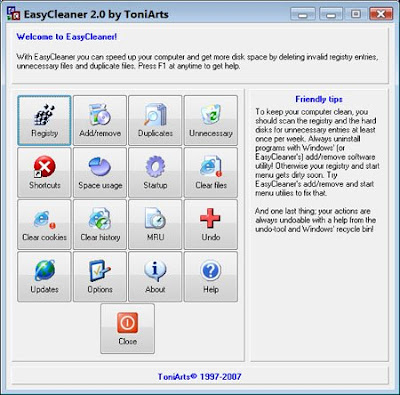It’s Web 7.0
written by dinire
at Kamis, 15 Mei 2008
ZDNet is running a little poll asking readers to find the "Top Ten differences between Web 1.0 and Web 2.0. The author manages to offer AJAX (bad) and O'Reilly alleged mark service on the expression (which is also wrong).
Top 10 reasons why it should be called "Web 7.0" or something similar
Incredibly, people feel that this is the first big, huge jump from what we had - but guess what? This is not the first time.
The ten things that have changed long before everyone knew of "Web 2.0":
1. We went on the ARPANET to the Internet.
2. We went on bulletin boards and a protocol called "gopher" to web pages and http.
3. We started to use Hypertext Markup Language.
4. We started using XML and CSS instead of HTML.
5. The development of TCP / IP.
6. DNS instead simple IP addresses.
7. Unicode plain text instead of DOS.
8. E-mail.
9. Instant Messaging.
10. Wireless access.
This is not the first - and certainly not the last - time that we experimented with new technologies during the development of the Internet. "Web 2.0" is simply a marketing tool and a name conferences O'Reilly, pure and simple.
The ten times to use the term "Web 2.0":
1. When talking about O'Reilly conferences.
2. When talking about O'Reilly conferences.
3. When talking about O'Reilly conferences.
4. When talking about O'Reilly conferences.
5. When talking about O'Reilly conferences.
6. When talking about O'Reilly conferences.
7. When talking about O'Reilly conferences.
8. When talking about O'Reilly conferences.
9. When talking about O'Reilly conferences.
10. When talking about O'Reilly conferences.
It is an excellent response to a survey which is frankly very out-of-date: The registry son (funny) survey on the same topic in November 2005. However, I resist the idea that this is nothing but marketing. I would like to begin a definition of "economic regeneration and a new enthusiasm for the Internet after the first wave, which ended in the NASDAQ crash of 2001" and finish with the idea of "build applications that the effects of network to get more people better use. "
Read More...
Top 10 reasons why it should be called "Web 7.0" or something similar
Incredibly, people feel that this is the first big, huge jump from what we had - but guess what? This is not the first time.
The ten things that have changed long before everyone knew of "Web 2.0":
1. We went on the ARPANET to the Internet.
2. We went on bulletin boards and a protocol called "gopher" to web pages and http.
3. We started to use Hypertext Markup Language.
4. We started using XML and CSS instead of HTML.
5. The development of TCP / IP.
6. DNS instead simple IP addresses.
7. Unicode plain text instead of DOS.
8. E-mail.
9. Instant Messaging.
10. Wireless access.
This is not the first - and certainly not the last - time that we experimented with new technologies during the development of the Internet. "Web 2.0" is simply a marketing tool and a name conferences O'Reilly, pure and simple.
The ten times to use the term "Web 2.0":
1. When talking about O'Reilly conferences.
2. When talking about O'Reilly conferences.
3. When talking about O'Reilly conferences.
4. When talking about O'Reilly conferences.
5. When talking about O'Reilly conferences.
6. When talking about O'Reilly conferences.
7. When talking about O'Reilly conferences.
8. When talking about O'Reilly conferences.
9. When talking about O'Reilly conferences.
10. When talking about O'Reilly conferences.
It is an excellent response to a survey which is frankly very out-of-date: The registry son (funny) survey on the same topic in November 2005. However, I resist the idea that this is nothing but marketing. I would like to begin a definition of "economic regeneration and a new enthusiasm for the Internet after the first wave, which ended in the NASDAQ crash of 2001" and finish with the idea of "build applications that the effects of network to get more people better use. "




